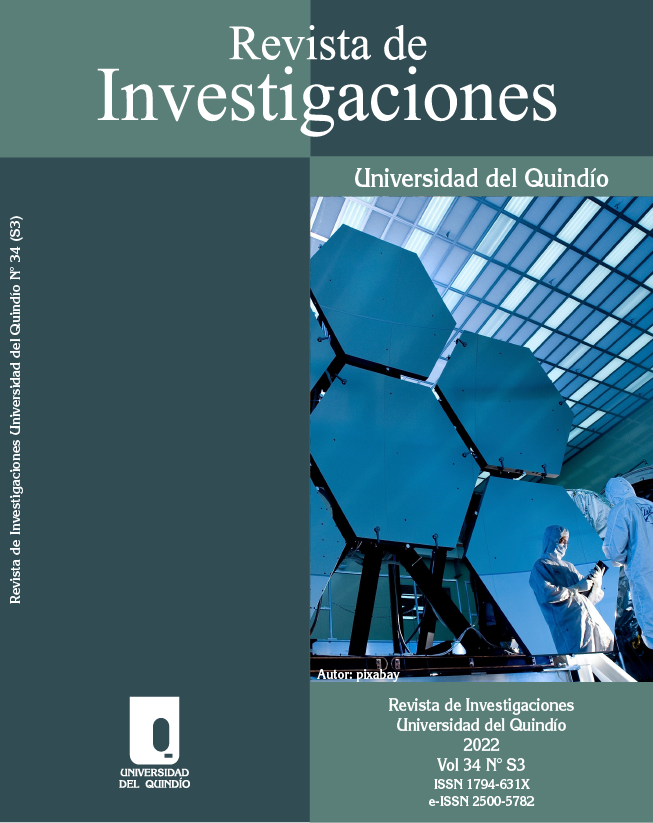Diagnóstico de la ansiedad personal del adolescente en las actividades educativas
DOI:
https://doi.org/10.33975/riuq.vol34nS3.992Palabras clave:
Personalidad, Adolescente, Actividad educativa, Ansiedad personal (Pa), Ansiedad situacional (SA)Resumen
El artículo proporciona una revisión teórica y analítica de los métodos modernos de diagnóstico de estados de ansiedad y ansiedad personal, que han sido utilizados por científicos rusos en los últimos años. El artículo presenta los argumentos de los científicos sobre la naturaleza y las características psicológicas y pedagógicas de la ansiedad personal como una propiedad de la personalidad, el estado mental y los rasgos del carácter. El artículo describe el aparato científico y las herramientas metodológicas de los procedimientos de diagnóstico. Los métodos utilizados en el estudio (observación, encuesta, análisis de los productos de la actividad educativa, el método de ansiedad personal y situacional de Spielberg-Khanin, el método de J. Taylor para medir el nivel de ansiedad, el método "Evaluación multidimensional de la ansiedad infantil" (MACA), se destacan los métodos estadísticos de procesamiento de datos y se discuten los resultados empíricos, los cuales indican que es necesario separar los conceptos científicos de ansiedad y malestar como no fundamentales y con diferente base psicológica y fisiológica.
Descargas
Citas
Bélair, M. A., Kohen, D. E., Kingsbury, M., & Colman, I. (2018). Relationship between leisure time physical activity, sedentary behaviour and symptoms of depression and anxiety: evidence from a population-based sample of Canadian adolescents. BMJ open, 8(10), e021119.
Bernaras, E., Jaureguizar, J., & Garaigordobil, M. (2019). Child and adolescent depression: A review of theories, evaluation instruments, prevention programs, and treatments. Frontiers in psychology, 10, 543.
Cost, K. T., Crosbie, J., Anagnostou, E., Birken, C. S., Charach, A., Monga, S., ... & Korczak, D. J. (2022). Mostly worse, occasionally better: impact of COVID-19 pandemic on the mental health of Canadian children and adolescents. European child & adolescent psychiatry, 31(4), 671-684.
Courtney, D., Watson, P., Battaglia, M., Mulsant, B. H., & Szatmari, P. (2020). COVID-19 impacts on child and youth anxiety and depression: challenges and opportunities. The Canadian Journal of Psychiatry, 65(10), 688-691.
Dale, L. P., Vanderloo, L., Moore, S., & Faulkner, G. (2019). Physical activity and depression, anxiety, and self-esteem in children and youth: An umbrella systematic review. Mental Health and Physical Activity, 16, 66-79.
Feiss, R., Dolinger, S. B., Merritt, M., Reiche, E., Martin, K., Yanes, J. A., ... & Pangelinan, M. (2019). A systematic review and meta-analysis of school-based stress, anxiety, and depression prevention programs for adolescents. Journal of youth and adolescence, 48(9), 1668-1685.
Geyikci, R., Cakmak, S., Demirkol, M. E., & Uguz, S. (2018). Correlation of anxiety and depression levels with attitudes towards coping with illness and sociodemographic characteristics in patients with a diagnosis of breast cancer. Dusunen Adam The Journal of Psychiatry and Neurological Sciences, 31(3), 246.
Hart Abney, B. G., Lusk, P., Hovermale, R., & Melnyk, B. M. (2019). Decreasing depression and anxiety in college youth using the Creating Opportunities for Personal Empowerment Program (COPE). Journal of the American Psychiatric Nurses Association, 25(2), 89-98.
Keles, B., McCrae, N., & Grealish, A. (2020). A systematic review: the influence of social media on depression, anxiety and psychological distress in adolescents. International Journal of Adolescence and Youth, 25(1), 79-93.
Juruena, M. F., Eror, F., Cleare, A. J., & Young, A. H. (2020). The role of early life stress in HPA axis and anxiety. Anxiety Disorders, 141-153.
Melnyk, B. M. (2020). Reducing healthcare costs for mental health hospitalizations with the evidence-based COPE program for child and adolescent depression and anxiety: a cost analysis. Journal of Pediatric Health Care, 34(2), 117-121.
McGuine, T. A., Biese, K. M., Petrovska, L., Hetzel, S. J., Reardon, C., Kliethermes, S., ... & Watson, A. M. (2021). Mental health, physical activity, and quality of life of US adolescent athletes during COVID-19–related school closures and sport cancellations: a study of 13 000 athletes. Journal of athletic training, 56(1), 11-19.
Pluhar, E., McCracken, C., Griffith, K. L., Christino, M. A., Sugimoto, D., & Meehan III, W. P. (2019). Team sport athletes may be less likely to suffer anxiety or depression than individual sport athletes. Journal of sports science & medicine, 18(3), 490.
Shuai, L., He, S., Zheng, H., Wang, Z., Qiu, M., Xia, W., ... & Zhang, J. (2021). Influences of digital media use on children and adolescents with ADHD during COVID-19 pandemic. Globalization and Health, 17(1), 1-9.
Ströhle, A., Gensichen, J., & Domschke, K. (2018). The diagnosis and treatment of anxiety disorders. Deutsches Ärzteblatt International, 115(37), 611.
Descargas
Publicado
Cómo citar
Número
Sección
Licencia
Derechos de autor 2022 Revista de Investigaciones Universidad del Quindío

Esta obra está bajo una licencia internacional Creative Commons Atribución-NoComercial-SinDerivadas 4.0.


